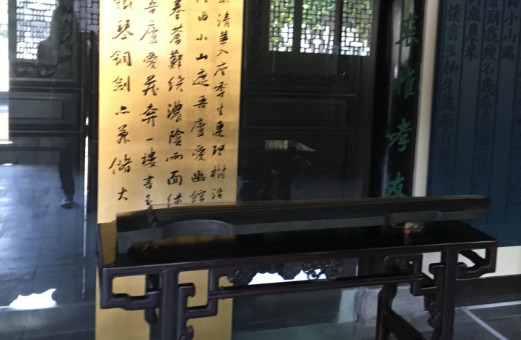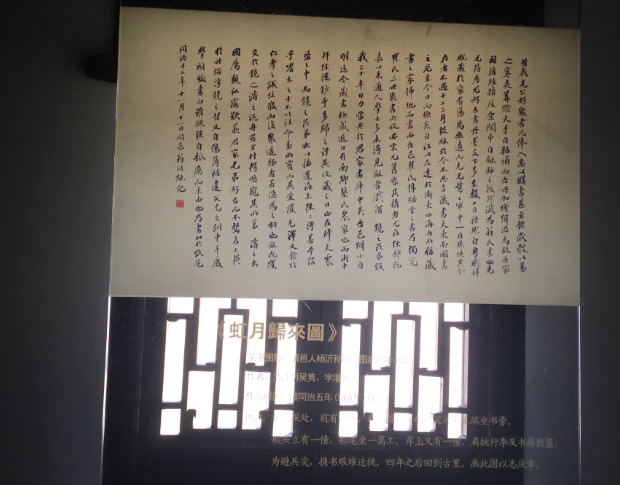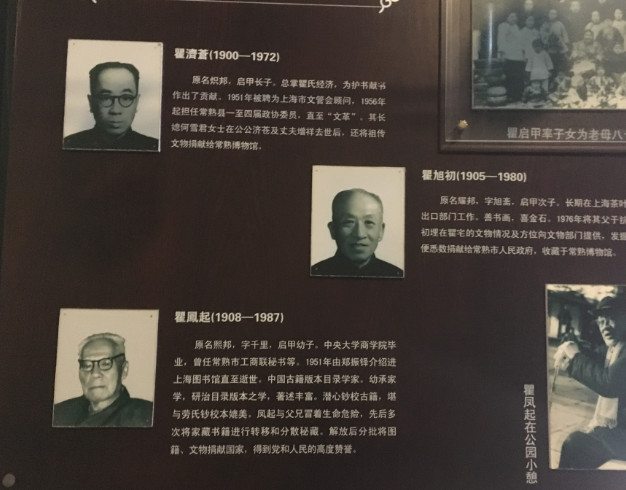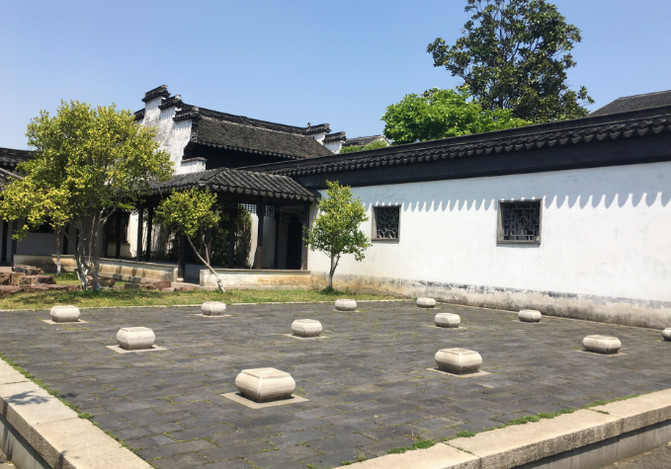Tieqin and Bronze Sword Tower, a library with a martial arts style
★ Tourist location: Changshu Guli Tiqin Bronze Sword Building
I have always known the name of the Tieqin and Bronze Sword Tower. For me, who had a martial arts dream, at first I thought it was a building inherited from martial arts. Later, I learned that it was a library, and it was quite famous. Therefore, it is really terrible to have no culture, and it makes people laugh and cry.囧。

When I went to Guli this time, I was surprised to find that the Tieqin and Bronze Sword Tower, which I had been talking about for a long time, was actually in the center of Guli Township. I dragged my friends in and registered my ID card to visit it for free.

The Tieqin Tongjian Building was founded by Qu Luoji, a native of Guli. It was built in the late Qianlong period of the Qing Dynasty and has a history of more than 200 years. It is together with Haiyuan Pavilion in Liaocheng, Shandong Province, the Song Building of Lu's family in Gui 'an, and the Baqian Juan Building of Ding's family in Qiantang River. It is called the four major private library buildings in the Qing Dynasty. Nowadays, there is only one of the four major libraries left, which makes people sigh with emotion.

When the building was built, it was named "Tianyuzhai", and later it was renamed "Dunyu Hall" to avoid the name of Emperor Guangxu Zaitian. These names are very common library names.

Later, the Qu family collected a Tieqin and a bronze sword, so the name of the Tieqin Bronze Sword Tower with a strong martial arts style came into being. It is famous around the world because of its high quality and large quantity of books. After five generations of inheritance, people summarize it in ten words: "Reading, collecting books, carving books, protecting books, and offering books."

The original Tieqin Bronze Sword Tower had four entrances, of which the first entrance hall and the second entrance Tianyuzhai were destroyed during the Anti-Japanese War. After liberation, descendants of the Qu family dedicated the building to the country. Now we see the memorial hall of the Tieqin and Bronze Sword Tower, which was rebuilt in 2009.
The third and fourth entrances are three-pronged buildings facing north and south. There is a small patio in the middle. It has three rooms wide and seven racks deep. It is made of hard mountains with hanging eaves. The lower eaves are carved with exquisite Kui dragon patterns, which looks very exquisite. At that time, the upper floors of these two entrances were used for collecting books, the third and downstairs was a reading office, and the fourth and downstairs was a family temple, which also contained antiquities and stone carvings. Qu Yong, a son of the Qu family, started collecting gold and stones.

Walking into the "Tieqin Liufang" hall, we saw the Tieqin and copper swords placed in the glass cabinets on the left and right of the hall at a glance. These were the gold and stone antiques that the landlord loved at that time. Otherwise, we would not have used these two things simply and crispy. The name of the library building.
The iron piano is made of wood and covered with an iron sheet. It is 120 centimeters long, 23 centimeters wide and 10 centimeters high. It has seven strings attached. There are two seal characters "Golden Sound" in the rectangular hole on the back. In "Qin Shu Yue Xing Ling", Qu Shaoji described the elegant time when the iron qin accompanied the ancient times. Qu Yong praised that the sound quality of the iron piano was suitable for ancient tunes, and he estimated that he could play ancient music such as "Guangling San". However, the iron hether we see now is a replica, and the original is collected in the National Library.

In the middle of the hall hangs a "Picture of the Iron Qin and Bronze Sword Tower", which was painted by a famous modern painter based on the plan of the Qu house provided by Qu Xuchu, a descendant of the Qu family. It is marked with eight small characters: "The home of books in Changshu Ancient Li", Qu family naturally can afford it.
On the side is Qu Yong's "Tieqin Bronze Sword Tower Ci Cao". Book collector Tai Ban is afraid of fame and fortune and enjoys reading. "Ci Cao" allows the human body to experience the owner's joy of reading. With a roll in hand, you can enjoy it.

The wing rooms on both sides display introductions from various generations of landlords. There is no need to use a lot of transparent materials. For people like us whose eyes are not very good, we feel a little uncomfortable. There were not many exhibits. At that time, descendants of the Qu family donated a large number of books to the library.
After passing through the patio to the last entrance, there are banners and scrolls hanging in the main hall, depicting the scene of a boat returning from the Jiangnan water town. The atmosphere of leisure comes to your face, so leisurely.

The wing rooms on both sides display introductions of Qu's descendants, which are quite detailed. There are also some letters from the Qu family in the exhibition cabinet. People from the book-collecting family all write well. After looking at the exhibits, I realized that the Tieqin Bronze Building not only collected books, but also published and printed a large number of books distributed in the world. Collecting books is just for entertainment, but carving books is pleasant. In ancient times, when e-books were not so convenient, carving books became particularly important.

The introduction of "Changshu·Hometown of Books in China" made people take aback. It turns out that Changshu's library buildings are not limited to the Tieqin and Bronze Sword Building, but there are also some private library buildings that have been passed down for several generations. In ancient times, it was said that private book collection was "the blessing of a gentleman, which was beheaded in five generations." The general rule of the development of book collection was that "collectors have no three generations." That is to say, although I am keen on collecting books, there are very few descendants who can keep it from generation to generation. There are many books in Changshu that have reached more than three generations. For example, the Qu family has preserved five generations and the Weng family has preserved six generations. Looking at the densely packed names of book collectors and libraries, we can only sigh with emotion about Changshu's cultural origin. Many book collectors have talked about collecting books by father and son, brothers, and husband and wife. The most famous ones are the Jiangyun Tower owned by Qian Qianyi and Liu Rushi. Others, such as Zhao Yongxian and Zhao Qimei's pulse viewing halls; Zhao Liewen and Zhao Kuan's father and son Tianfang Tower, Xiaowaowang Hall, etc., have left good names in the history of book collection.

Later, in April, I came here with my friends. There was a smiling tree in the small courtyard next to it, which was blooming with a strange fragrance. I touched two leaves lightly with my hand and dropped them. I put them in my pocket when they were precious. As a result, my fingers were still fragrant until Shanghu turned and left (because I would stick them into my pocket from time to time).














Previous Article:Xiyuan, the unforgettable Sanfang Jigong
